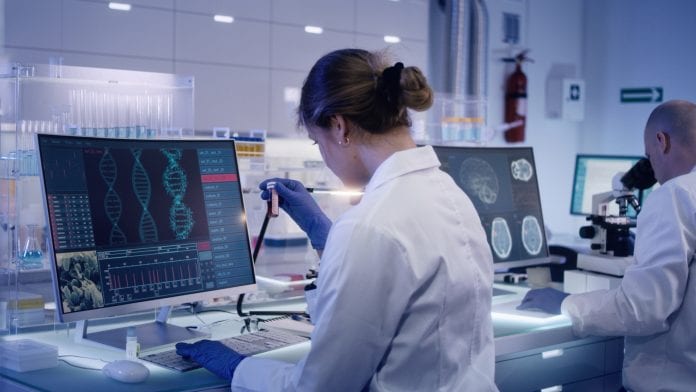
A team of researchers has designed a testing protocol for SARS-CoV-2 that can process tens of thousands of samples – potentially helping to prevent the next pandemic.
The team from the Vienna BioCenter has combined their expertise in genomics, RNA biochemistry, and data analysis, to design the testing protocol for SARS-CoV-2 – called SARSeq, or ‘Saliva Analysis by RNA sequencing’. The method enables large groups to be tested for SARS-CoV-2 with the same sensitivity as regular PCR tests and achieves high sensitivity, specificity, as well as having the power to process up to 36,000 samples in less than 48 hours.
The method, which the researchers say could be adapted to other pathogens, has been published in the journal Nature Communications.
Improving testing
So far, molecular tests that detect the presence of SARS-CoV-2 are the best way to isolate positive COVID-19 cases and contain the spread of the virus. Some of these methods include detecting viral proteins from nasopharyngeal swabs, such as antigen tests, and some that detect the presence of viral RNA from swabs, gargle samples, or saliva samples, such as reverse transcription and polymerase chain reaction tests (T-PCR).
Antigen testing is, however, relatively weak as infected individuals carrying low amounts of the virus remain undetected. PCR tests are more sensitive because they multiply fragments of the viral genome before scanning samples for the virus. The downside of this is that they rely on the detection of fluorescent labels that tag viral sequences. This means that pooling samples coming from different people makes the process rather inefficient as, if a pool tests positive, all the samples within the pool must be tested again individually to identify the source of the fluorescent signal.
Ulrich Elling, group leader at the Institute of Molecular Biotechnology of the Austrian Academy of Sciences (IMBA), and Luisa Cochella, group leader at the Research Institute of Molecular Pathology (IMP), Alonf with IMP group leader Alexander Stark and IMBA postdoc Ramesh Yelangandula joined their efforts, and have now developed an innovation in testing. In the SARSeq testing, individual patient samples are collected into the wells of a testing plate then a fragment of viral RNA unique to SARS-CoV-2 – the nucleocapsid gene – is selectively converted to DNA and PCR-amplified in any well that contains it.
Cochella explained: “Amplifying the viral material from individual samples to a maximum homogenizes its quantity across positive samples, making SARSeq highly sensitive. Within the thousands of samples that we could test simultaneously, some may contain up to 10 million times more coronavirus particles than others – if we pooled such samples before amplification, those with high amounts of viral material could mask other positive cases.”
This first step is an improvement on OCR testing as each sample receives a unique set of short DNA sequences that attach to the amplifying viral DNA. In a second amplification step, all the samples from one plate are pooled into one well, which receives a second set of unique DNA barcodes. The contents of multiple plates can be pooled once more, as the DNA molecules from each sample carry a unique combination of two sets of barcodes. This pooling and barcoding strategy makes SARSeq highly specific and scalable.
Yelagandula added: “We combine the sensitivity of PCR with the high throughput of Next Generation Sequencing technology, or NGS, the same used to sequence the human genome. The NGS machine processes the pooled samples and tells us which samples contained any SARS-CoV-2 material. The barcodes allow us to distinguish each positive sample from the others and trace it back to a patient.”
The NGS-based method also allows to test several RNAs in parallel, including RNAs that control the sample quality or RNAs from other pathogens for differential diagnostics. The method is also cost-efficient, as Stark points out, as each test is expected to cost less than five Euros, and does not compete with other testing methods for reagents or equipment as the testing procedure can run in parallel to existing diagnostics, while being independent of the bottlenecks in supply chains.
“We developed SARSeq to try and circumvent the limitations of other tests, and to process thousands of samples in parallel. Not only is it an excellent method to detect SARS-CoV-2, but it can also be applied to other respiratory pathogens like the flu virus, the common cold rhinoviruses, and potentially many others,” says Elling.









